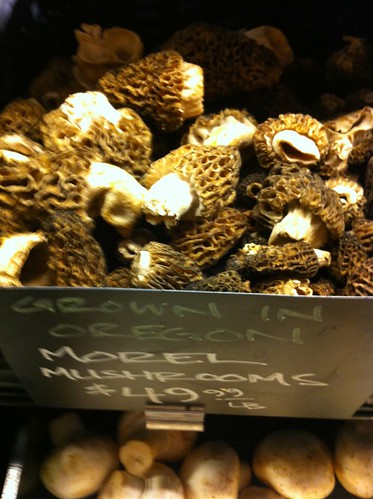
My interest in foragable foods has been increasing lately, and each time I learn of a new plant that is edible, I begin seeing it everywhere. It started two years back when I learned about Pineapple Weed from reading the blog Fat of the Land. Then a trip to the farmers market revealed that Japanese Knotweed is edible, and particularly good when it first sprouts - looking and tasting a bit like a hybrid of asparagus and rhubarb. Each time, I start seeing the plant at every turn, and often in the oddest places. Cracks in the sidewalk seem to be a particularly good environment for many Seattle edibles - including both the aforementioned plants, plus dandelion and plantain.
With three extra mouths to feed, learning which of the plants growing in and around our yard can be consumed means free food for the chickens (and us), so I decided this year I'd make a more concerted effort. I bought a copy of the paperback Fat of the Land: Adventures of a 21st Century Forager
Neither includes photos, but by cross referencing the species mentioned with good ol' Google, I'm beginning to build on my knowledge of foragables in the area and their culinary uses, and am again seeing them at every turn.
Case in point: the Morel Mushrooms I discovered growing in the garden beds at my brand new office building. I walked by them a couple times wondering if they could possibly be what I thought they were, but disbelieving that such a coveted edible, which pulls in $50 per pound at Whole Foods down the street, could possible be growing in a garden bed. After consulting with my friends Jason and Martha, dozens of web sites and even more photos, I confirmed they were in fact morels - lots of them - free for the picking. So I grabbed a few on the way home today.
Even though I was confident in my identification (there really aren't any mushrooms that are similar to a morel, and the closest are obviously different in key ways, such as not being hollow like a morel), I took advice I heard and read many places to cook it well (in butter), and eat only a small piece (a tablespoon or less) at first. Some people have bad reactions to even edible mushrooms, so a test is best.
The bite was meaty, buttery (no surprise there) and very satisfying. We'll eat some of the others, and save a couple to try to propagate a batch in our own yard. I hear they like apple trees, so maybe the overgrown behemoth that offers only an apple or two each year can finally help produce something tasty.







No comments:
Post a Comment